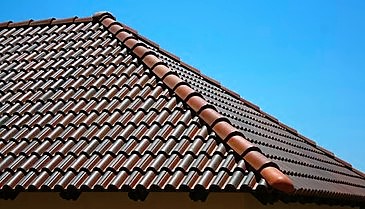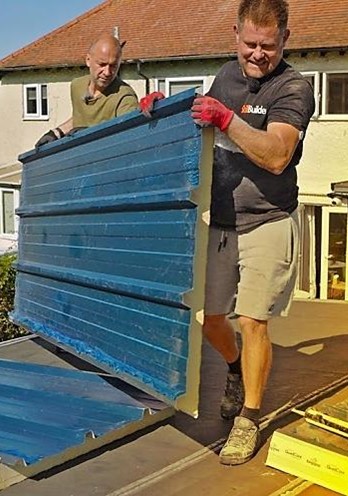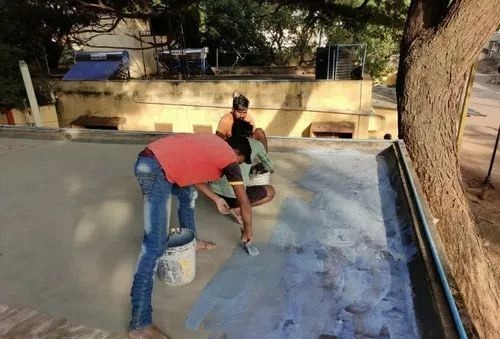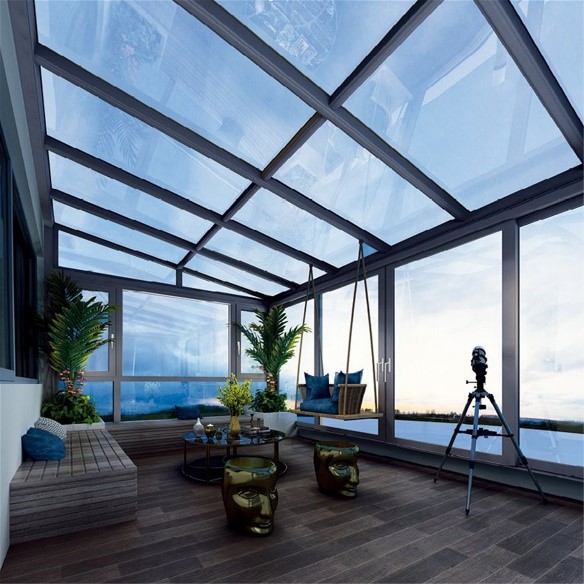Balancing Climate, Tradition and Innovation

In a tropical country like Sri Lanka, roofing is more than a functional necessity. It’s a fundamental part of how buildings interact with the tropical environment, local culture and construction realities. From the timeless charm of clay tiles to the efficiency of modern metal sheets, roofing finishes shape not only a building’s silhouettes but also its thermal comfort, durability and even social identity. Therefore it is important to have a basic understanding of the main options available, their advantages and limitations.

‘Strong roofs, safer homes’ ©Shutterstock
Clay tile roofing
Clay tile roofing has long been the hallmark of traditional Sri Lankan architecture. The familiar terracotta tiles, often hand-molded and kiln-fired, lend a warmth and texture that resonate deeply with the vernacular aesthetics. Their heavy mass and characteristic gaps between tiles allow for natural ventilation, creating a cooling buffer that is invaluable in the hot, humid lowlands and the misty country alike. The pitched roof with generous overhangs effectively sheds the heavy monsoon rains while protecting walls and openings. Yet, this beauty comes with structural demands – supporting clay tiles requires good timber or steel rafters, and their weight and fragility necessitate skilled installation and ongoing maintenance. Greenery invasion or occasional breakage in high-rain areas mean owners must be vigilante to preserve their roof. Despite these challenges, clay tiles remain unmatched for projects that seek to blend tradition, climate responsiveness and timeless aesthetics.

Calicut roof tiles ©Surplus.lk
 Clay tiled roofing ©Shutterstock
Clay tiled roofing ©Shutterstock
Zinc-Aluminum Roofing
On the other end of the spectrum is the Zinc-Aluminum coated steel roofing, colloquially called as zincalume. These lightweight metal sheets have become the backbone of contemporary roofing solutions due to their cost effectiveness and the ease of installation. The alloy coating offers excellent corrosion resistance, especially in inland areas less exposed to salty coastal air. Their reflective surfaces can significantly reduce heat gain when combined with appropriate insulation or ventilated cavities beneath. However, the metal roofs have drawbacks as well. They can generate noise during rainstorms, common in Sri Lanka’s monsoon climate, and tend to radiate heat into the interiors if not properly insulated or ventilated. Furthermore, unless specifically designed for marine environments, standard zinc-aluminum sheets are susceptible to corrosion near the coast. Despite these limitations, their versatility and affordability make them the roofing material of choice for many buildings at present.

Laying of Zn-Al roofing ©Mostech Holding

Zn-Al roofing sheet ©Stockpile.lk
Asbestos Roofing
While Asbestos-cement roofing once held a significant place in Sri Lanka’s building industry, its use has declined sharply due to health concerns associated with airborne asbestos fibers. Previously values for its fire resistance and durability, asbestos roofing also demands careful handling during removal or renovation. New construction no longer employs asbestos sheets, reflecting global trends and Sri Lankan regulations aiming to phase out hazardous materials. The focus today is on safer, sustainable alternatives that do not compromise on performance or affordability.

Asbestos roofing sheet ©Surplus.lk

Asbestos roof laying ©Village Civil YouTube
Composite roofing panels
In recent years, composite roofing panels are growing as a modern solution, particularly suited for prefabricated or industrial structures. These panels, often composed of metal skins sandwiching an insulating foam core, combine structural efficiency with thermal performances. Their fast installation and built-in insulation makes them ideals for settings like factory, warehouse, institutional buildings, etc. However, it also needs precise detailing to prevent leaks and condensation issues requires experienced workmanship. The higher initial cost compared to metal sheets can also be a deterrent, though the energy savings and reduced maintenance may offset this over time.

Handling composite roofing ©Skillbuilder YouTube

Aluminum composite roofing ©CHAL Aluminum Corporation
Concrete slabs
Concrete flat roofs, prevalent in Sri Lanka’s urban housing and commercial buildings, offer a durable, multifunctional surface that doubles as usable space for terraces, water tanks, or even solar installations. While structurally robust, these slabs presents challenges in thermal comfort, as concrete absorbs and retains heat, often warming interiors during the night. Effective waterproofing is essential to prevent leaks, typically achieved through bituminous or polymer-based membranes. The cost and technical requirements are higher than pitched roofs, but in dense urban contexts where space is at premium, flat concrete roofs remain popular.

Concreting process ©FundiLink

Applying waterproofing coat on slab ©Wedabima
Glass Roofing
Glass roofing, though uncommon in Sri Lanka’s residential architecture, offers unique possibilities in modern designs—especially in atriums, verandahs, or transitional spaces. When paired with treated or laminated glass and proper shading devices, it can flood interiors with natural light while still providing UV protection. In tropical climates, however, heat gain remains a major challenge. Thus, glass roofs are often used selectively, with integration of ventilation systems or smart films to control solar transmission. While aesthetically striking, they demand precise engineering and are best suited for controlled environments like conservatories, high-end resorts, or cultural pavilions.

Glass roofing ©Dutch Interiors
Thatched Roofing
Rooted in centuries-old vernacular wisdom, thatched roofs—made from coconut fronds, Illuk grass, or palm leaves—remain one of the most climatically responsive roofing options. Their thick organic layers provide excellent insulation from heat and allow hot air to escape easily, ideal for rural and eco-sensitive contexts. However, thatch is highly vulnerable to pests, fire, and moisture decay, making regular upkeep essential. Despite these concerns, a renewed interest in sustainable, low-impact architecture has seen thatch re-emerge in eco-lodges and community-driven pavilions, especially when paired with modern fire retardants and protective detailing.

Thatched roofing ©Shutterstock
Green Roofing
An emerging frontier in roofing, it is the integration of green or vegetated roofs—especially atop concrete slabs in urban settings. By layering waterproof membranes, root barriers, and lightweight soil substrates, buildings can host rooftop gardens that aid thermal insulation, reduce runoff, and support biodiversity. While initial costs and structural loads are considerations, the long-term environmental benefits and visual appeal make them increasingly popular for schools, apartment blocks, and civic institutions committed to sustainability.

Green roofing ©AzoBuild
Selecting the right roofing finish in Sri Lanka requires a nuanced understanding of multiple factors: the local climate, function, budget constraints, structural systems and maintenance capabilities. For instance, coastal building must prioritize corrosion resistance and salt tolerance while hill side homes benefit from breathability of clay tiles. Public building often demand low-maintenance materials that balance cost and longevity, while heritage or hospitality projects may lean towards traditional roofing to preserve cultural resonance.
Looking ahead, Sri Lanka’s roofing landscape is gradually embracing hybrid approaches that merge tradition and innovation. Combining metal sheets with ventilated timber soffits, integrating green roofs atop concrete slabs, and installing solar-reflective coatings are becoming more common. These strategies acknowledge the roof’s evolving role—not just as a weather barrier but as a dynamic participant in sustainability, energy efficiency, and even social experience. In a country where climate extremes and cultural depth coexist, roofing finishes will continue to be a vital canvas for architectural creativity and technical ingenuity.

















